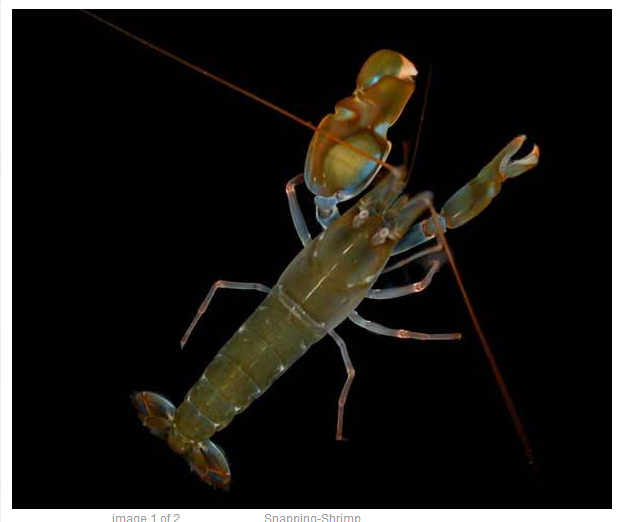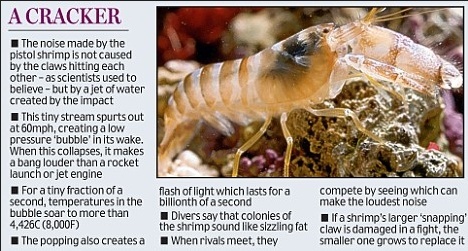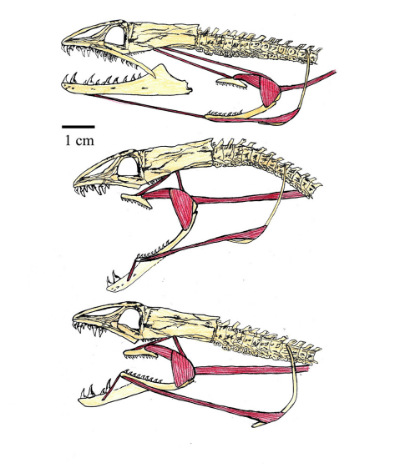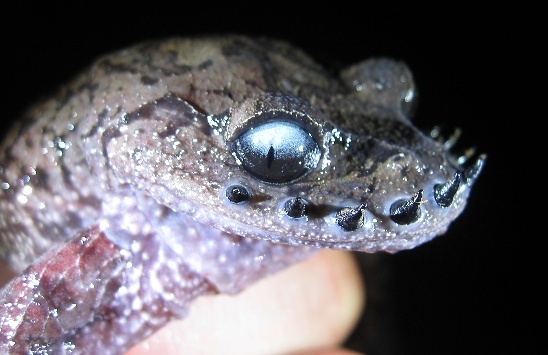Animals with superpowers
https://reasonandscience.catsboard.com/t1627-animals-with-superpowers
Following, a few astonishing animals with amazing features, which are great examples of design. It's worth to take your time and see all videos. Difficult to imagine how these abilities could have evolved. I am indeed incredule towards evolution.... and I think for good reasons. How could each of these animals have evolved their capabilities, if the way they hunt, or have sex, or hide, or mimic, are only functioning if fully deveolped?
The velvet worms slime cannon mechanism is irreducibly complex :
http://www.plosone.org/article/info%3Adoi%2F10.1371%2Fjournal.pone.0051220
it needs at least three different systems
1) weapon: slime pistol/gland which stores an adhesive which is what this slime is
2) ammunition: paralysing slime which only dries and hardens when ejected
3) targeting mechanism/ability
Each of these traits would not provide any survival advantage by their own , and have to appear fully functional, otherwise, the mechanism does not work.
evolution is blind and would have to randomly generate each part, which in turn would need to provide a selection advantage to be passed to the next generation. I agree that it is possible, however it is very unlikely and there currently is no evidence that this happened. We can accept it on faith. Question for you, how would you falsify this.?
https://www.youtube.com/watch?v=mrL2A7my1fc
Bird Mimics Chainsaw, Car Alarm and More
https://www.youtube.com/watch?v=XjAcyTXRunY
Swallowed Newt Escapes Death
https://www.youtube.com/watch?v=kvBi5Wv8-qg
Raising Kids in a Corpse?
How could the secrete natural preservatives have evolved ??
https://www.youtube.com/watch?v=Y9iZvsClC10
Eating Myself: Giant Centipede
https://www.youtube.com/watch?v=VcuFGsvms2A
Killer Cuckoo Catfish
https://www.youtube.com/watch?v=tnvbVIcZZHc
Killer Cone Snails
https://www.youtube.com/watch?v=JjHMGSI_h0Q
https://www.youtube.com/watch?v=FYh2zeAsRXY
Carnivorous Caterpillars
https://www.youtube.com/watch?v=K5qijI--v9E
Amazing Speed-Gulp Killing
https://www.youtube.com/watch?v=bJ3FC3ISQvk
Glow Worm Lure
http://channel.nationalgeographic.com/wild/worlds-weirdest/videos/glow-worm-lure/
Weird Killer of the Deep
http://video.nationalgeographic.com/video/weirdest-angler-fish
Amazing Sting Defense
http://video.nationalgeographic.com/video/weirdest-nudibranch
Portuguese Man-of-War
http://video.nationalgeographic.com/video/weirdest-clam-vs-world?source=relatedvideo
Clams vs. the World
http://video.nationalgeographic.com/video/weirdest-clam-vs-world?source=relatedvideo
Zombie Snails
http://video.nationalgeographic.com/video/worlds-deadliest-ngs/deadliest-zombie-snails?source=relatedvideo
Comb jellies look anything but dangerous. But those pretty, flashing lights can mean death for unwary prey.
http://video.nationalgeographic.com/video/weirdest-neon-killers?source=relatedvideo
Sea Cucumber Fights With Guts (Literally)
http://video.nationalgeographic.com/video/weirdest-sea-cucumber?source=relatedvideo
Underwater Love Chain
http://video.nationalgeographic.com/video/weirdest-sea-hare?source=relatedvideo
Stunning Jellyfish
http://video.nationalgeographic.com/video/jellyfish?source=relatedvideo
Plumed Worm
Plumed birds, yeah. Plumed serpents, sure. But who ever heard of this sea creature—the plumed worm?
http://video.nationalgeographic.com/video/clam_giant?source=relatedvideo
Sea Salps
http://video.nationalgeographic.com/video/sea_salps?source=relatedvideo
Nudibranch
Sea Angels
http://video.nationalgeographic.com/video/sea_angels?source=relatedvideo
World's Weirdest: Camouflaged Killer
http://video.nationalgeographic.com/video/weirdest-sargassum-fish
Best Disguised Predator Fish?
http://video.nationalgeographic.com/video/stonefish-predation?source=relatedvideo
Weaver Home Security
http://video.nationalgeographic.com/video/weirdest-weaver-bird?source=relatedvideo
Baby Toads Born from Mom's Back
http://video.nationalgeographic.com/video/weirdest-surinam-toad-birth
Smelly Fruit Fly Cologne
http://video.nationalgeographic.com/video/weirdest-fruit-fly
Bat Hunts in "Stealth Mode"
http://video.nationalgeographic.com/video/weirdest-long-eared-bat
Flounder is Master of Disguise
https://www.youtube.com/watch?v=EIMRSt40OMk
The harp sponge: an extraordinary new species of carnivorous sponge
https://www.youtube.com/watch?v=VC3tAtXdaik
http://www.squidoo.com/10-most-extraordinary-animals
http://webecoist.momtastic.com/2008/11/04/9-of-the-most-bizarre-animal-defense-mechanisms/
http://hubpages.com/hub/25-Most-Amazing-and-Unique-Animals-On-Earth
http://listverse.com/2012/12/03/10-amazing-animal-abilities/
http://distractify.com/fun/animals-fun/30-animals-that-are-secretly-amazing/
http://crev.info/2014/01/amazing-animals/
http://en.wikipedia.org/wiki/Apparent_death
https://www.facebook.com/UAFacts?sk=app_2231777543&filter=3
https://reasonandscience.catsboard.com/t1627-animals-with-superpowers
Following, a few astonishing animals with amazing features, which are great examples of design. It's worth to take your time and see all videos. Difficult to imagine how these abilities could have evolved. I am indeed incredule towards evolution.... and I think for good reasons. How could each of these animals have evolved their capabilities, if the way they hunt, or have sex, or hide, or mimic, are only functioning if fully deveolped?
The velvet worms slime cannon mechanism is irreducibly complex :
http://www.plosone.org/article/info%3Adoi%2F10.1371%2Fjournal.pone.0051220
it needs at least three different systems
1) weapon: slime pistol/gland which stores an adhesive which is what this slime is
2) ammunition: paralysing slime which only dries and hardens when ejected
3) targeting mechanism/ability
Each of these traits would not provide any survival advantage by their own , and have to appear fully functional, otherwise, the mechanism does not work.
evolution is blind and would have to randomly generate each part, which in turn would need to provide a selection advantage to be passed to the next generation. I agree that it is possible, however it is very unlikely and there currently is no evidence that this happened. We can accept it on faith. Question for you, how would you falsify this.?
https://www.youtube.com/watch?v=mrL2A7my1fc
Bird Mimics Chainsaw, Car Alarm and More
https://www.youtube.com/watch?v=XjAcyTXRunY
Swallowed Newt Escapes Death
https://www.youtube.com/watch?v=kvBi5Wv8-qg
Raising Kids in a Corpse?
How could the secrete natural preservatives have evolved ??
https://www.youtube.com/watch?v=Y9iZvsClC10
Eating Myself: Giant Centipede
https://www.youtube.com/watch?v=VcuFGsvms2A
Killer Cuckoo Catfish
https://www.youtube.com/watch?v=tnvbVIcZZHc
Killer Cone Snails
https://www.youtube.com/watch?v=JjHMGSI_h0Q
https://www.youtube.com/watch?v=FYh2zeAsRXY
Pistol Shrimp sonic weapon - Weird Nature - BBC wildlife
http://creation.com/pistol-packing-shrimp
The pistol shrimp’s claw is an extremely specialized construct that needs precision design in order to function. Of the millions of random mutations that might occur that would change the shape of a claw (a bump, indentation or protrusion of some sort?) there would be precious few that would have been ‘on the way’ to becoming a ‘sonic gun’ variant. Granting that evolutionists admit that beneficial mutations are rare, the point is; “What survival benefit would those small shape changes have conferred to the shrimp on the way to becoming a sonic claw?”
http://feedmysheepuk.wordpress.com/2012/12/22/amazing-creations-the-pistol-shrimp/
The shrimp also takes part in an interesting symbiotic relationship with certain species of goby fish. The pistol shrimp has terrible eyesight and cannot see predators approaching. Despite its formidable weaponry, the pistol shrimp is left vulnerable to attacks by fast predators that can take advantage of its poor eyesight. To overcome this difficulty, the pistol shrimp stays close by its symbiont, the goby fish. The shrimp rests its antennae on the goby’s body. When the goby sees a predator approaching, it warns the pistol shrimp by means of certain bodily movements which act as signals. When the shrimp feels these signals, it retreats, along with the goby, back into their mutually-shared burrow. This allows the shrimp to lay in wait to ambush the unwitting fish with its pressure-weapon without fear.
There is no way that this tiny marvel of engineering did not have a designer.
https://www.youtube.com/watch?v=XC6I8iPiHT8
Carnivorous Caterpillars
https://www.youtube.com/watch?v=K5qijI--v9E
Amazing Speed-Gulp Killing
https://www.youtube.com/watch?v=bJ3FC3ISQvk
Glow Worm Lure
http://channel.nationalgeographic.com/wild/worlds-weirdest/videos/glow-worm-lure/
Weird Killer of the Deep
http://video.nationalgeographic.com/video/weirdest-angler-fish
Amazing Sting Defense
http://video.nationalgeographic.com/video/weirdest-nudibranch
Portuguese Man-of-War
http://video.nationalgeographic.com/video/weirdest-clam-vs-world?source=relatedvideo
Clams vs. the World
http://video.nationalgeographic.com/video/weirdest-clam-vs-world?source=relatedvideo
Zombie Snails
http://video.nationalgeographic.com/video/worlds-deadliest-ngs/deadliest-zombie-snails?source=relatedvideo
Comb jellies look anything but dangerous. But those pretty, flashing lights can mean death for unwary prey.
http://video.nationalgeographic.com/video/weirdest-neon-killers?source=relatedvideo
Sea Cucumber Fights With Guts (Literally)
http://video.nationalgeographic.com/video/weirdest-sea-cucumber?source=relatedvideo
Underwater Love Chain
http://video.nationalgeographic.com/video/weirdest-sea-hare?source=relatedvideo
Stunning Jellyfish
http://video.nationalgeographic.com/video/jellyfish?source=relatedvideo
Plumed Worm
Plumed birds, yeah. Plumed serpents, sure. But who ever heard of this sea creature—the plumed worm?
http://video.nationalgeographic.com/video/clam_giant?source=relatedvideo
Sea Salps
http://video.nationalgeographic.com/video/sea_salps?source=relatedvideo
Nudibranch
Sea Angels
http://video.nationalgeographic.com/video/sea_angels?source=relatedvideo
World's Weirdest: Camouflaged Killer
http://video.nationalgeographic.com/video/weirdest-sargassum-fish
Best Disguised Predator Fish?
http://video.nationalgeographic.com/video/stonefish-predation?source=relatedvideo
Weaver Home Security
http://video.nationalgeographic.com/video/weirdest-weaver-bird?source=relatedvideo
Baby Toads Born from Mom's Back
http://video.nationalgeographic.com/video/weirdest-surinam-toad-birth
Smelly Fruit Fly Cologne
http://video.nationalgeographic.com/video/weirdest-fruit-fly
Bat Hunts in "Stealth Mode"
http://video.nationalgeographic.com/video/weirdest-long-eared-bat
Flounder is Master of Disguise
https://www.youtube.com/watch?v=EIMRSt40OMk
The harp sponge: an extraordinary new species of carnivorous sponge
https://www.youtube.com/watch?v=VC3tAtXdaik
http://www.squidoo.com/10-most-extraordinary-animals
http://webecoist.momtastic.com/2008/11/04/9-of-the-most-bizarre-animal-defense-mechanisms/
http://hubpages.com/hub/25-Most-Amazing-and-Unique-Animals-On-Earth
http://listverse.com/2012/12/03/10-amazing-animal-abilities/
http://distractify.com/fun/animals-fun/30-animals-that-are-secretly-amazing/
http://crev.info/2014/01/amazing-animals/
http://en.wikipedia.org/wiki/Apparent_death
https://www.facebook.com/UAFacts?sk=app_2231777543&filter=3
Last edited by Admin on Fri Nov 30, 2018 4:03 am; edited 2 times in total








